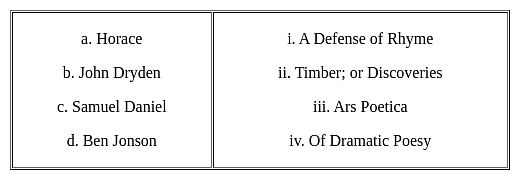TS SET Paper 2 Mock Test - 3 (English) - TS TET MCQ
30 Questions MCQ Test TS SET Mock Test Series 2024 - TS SET Paper 2 Mock Test - 3 (English)
In Philip Larkin's poem "Mr. Bleaney," how does the portrayal of Mr. Bleaney's living conditions contribute to the overall theme of societal disillusionment and personal dissatisfaction?
What is the primary theme conveyed in Percy Bysshe Shelley's "Ode to the West Wind"?
Sir Thomas Browne’s Urn Burial was prompted by __________.
Who among the following Victorian poets disliked his middle name ?
Why does the neighbor refuse to allow the wall to disappear naturally ?
What does the phrase "brutish necessity" in Walcott's "A Far Cry from Africa" suggest about the nature of conflict?
What does the term "divided to the vein" imply about the poet's personal conflict in "A Far Cry from Africa"?
By questioning “How can I face such slaughter and be cool?”, what is the poet's intended meaning in "A Far Cry from Africa"?
Charles Dickens's visit to the United States produced ____ .
Who among the following is the author of Account of the Augustan Age in England (1759)?
The term 'ecological imperialism' was coined by
The novel has a scene where African - American students are made to compete and fight with each other as they rush for the gold coins tossed on an electric blanket . Identify the novel.
Match the following work with their authors.

Find the chronological order in which the following literary movements came into being:
A. Romanticism
B. Realism
C. Modernism
D. Postmodernism
E. New Formalism
Choose the correct answer from the options given below:
What is NOT a material reality in the oppression of women ?
One of the following texts was published earlier than 1955 . Identify the text.
|
60 tests
|


















